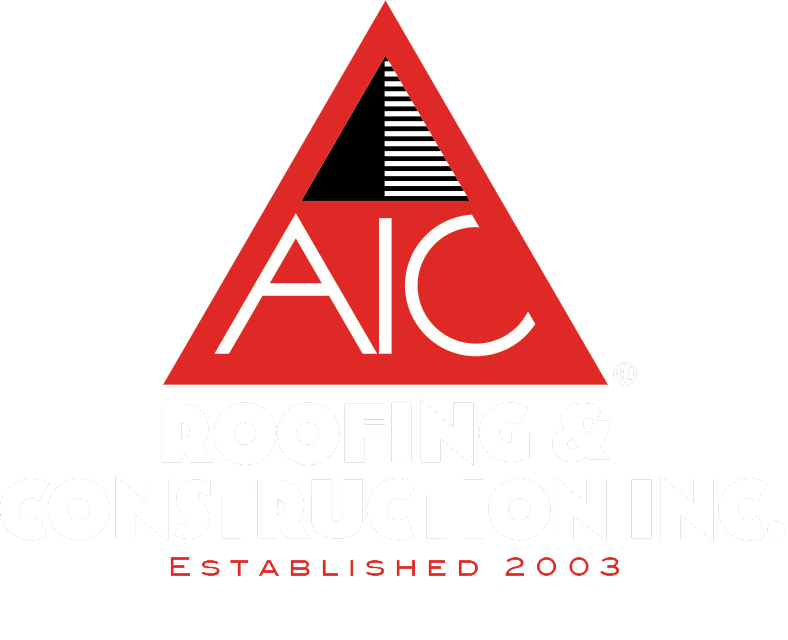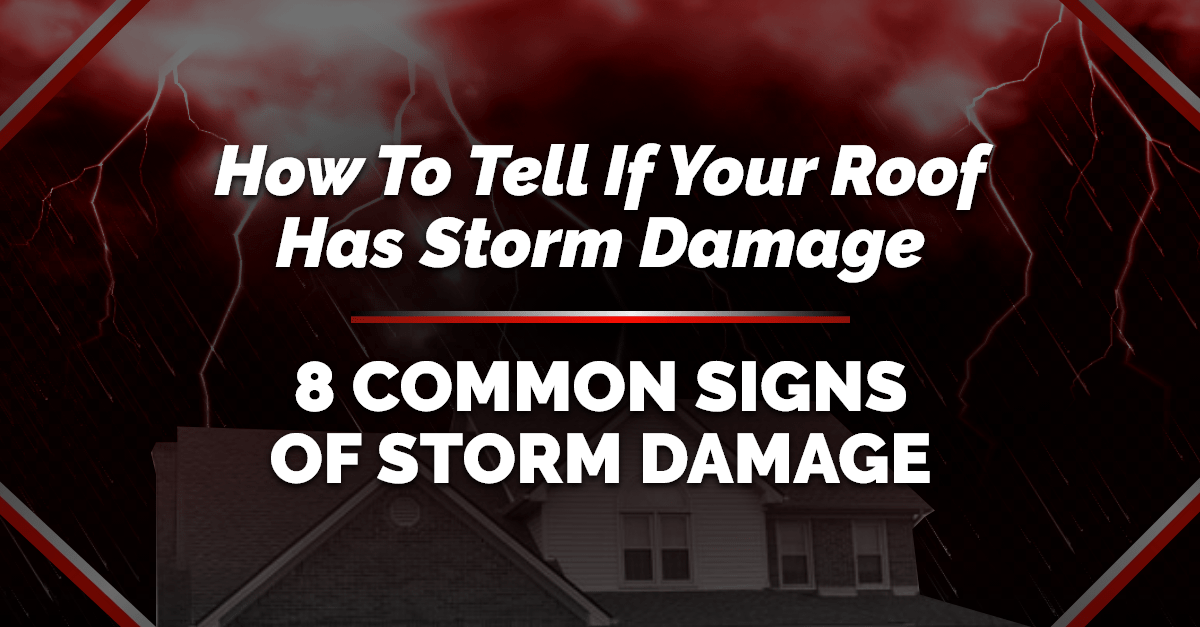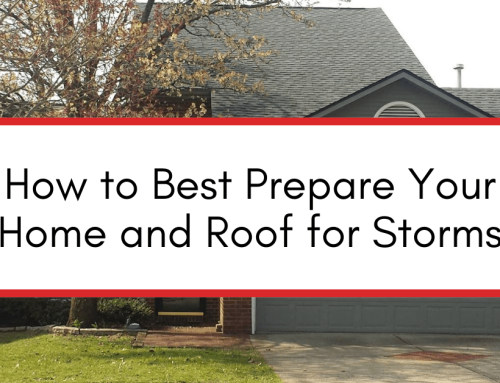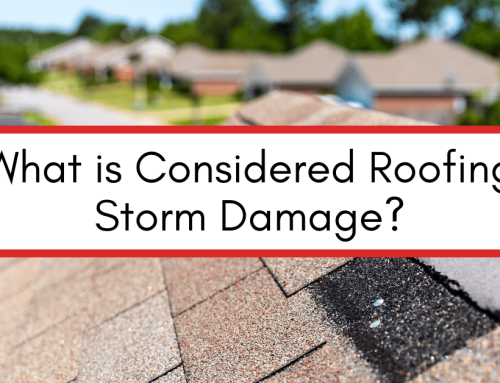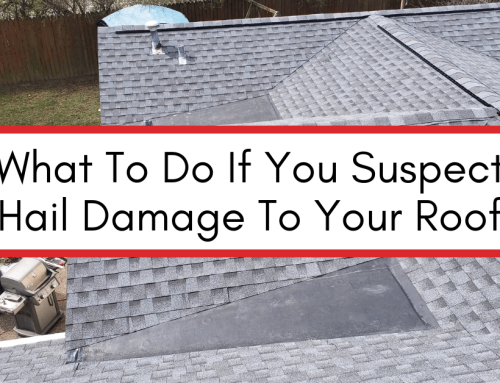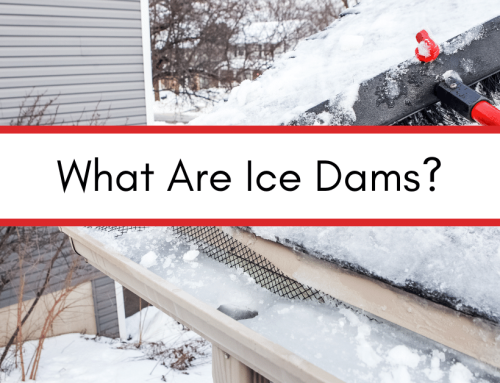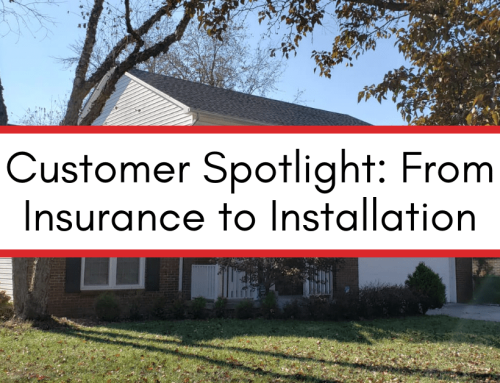Your roof protects your biggest asset – your home. Most homeowners are aware that their homeowner’s insurance policy most likely covers damage to their roof resulting from a storm. However, many homeowners don’t catch this damage in a timely manner. It’s important to repair storm damage right away to prevent leaks and take full advantage of your insurance benefits. Most homeowner’s insurance policies require a claim to be made within a certain window (usually 12 months) after the damaging event.
We recommend getting your roof inspected annually as part of best home maintenance practices. This ensures that you catch any damage from a storm before it’s too late. Inspections are free, and can help identify small repair items before they cause thousands in water damage and mold.
In addition to annual inspections, it’s important to be on the lookout for some key signs after a storm passes through your area. If you notice any of the tell-tale signs mentioned below, be sure to contact your trusted Louisville roofing contractor immediately! Your roofing contractor will help you navigate the homeowner’s insurance process and take swift action to repair your roof.
You can observe most of these 8 signs yourself, simply by walking around and inspecting your home.
Here are 8 signs your roof has storm damage:
1. Granules in your gutter.
Granules on the surface layer of your asphalt shingles protect your roof from harmful UV rays, among other things. Some granule loss over time is typical, but after severe weather – particularly hailstorms, there can be significant granule loss. Inspect your downspouts after a hailstorm to see if there are granules. You can also spot granule loss simply by looking at your roof. Strong winds can also knock granules loose, resulting in faint horizontal lines on your roof. These are apparent just by observing your roof.
Granule loss does not always mean your roof needs a full replacement – but if you want to avoid issues with weatherproofing and maximize the life of your roof, you should replace any shingles that have significant granular wear.
2. Ice Dams Forming on your roof or gutters
A common result from winter snow storms are ice dams. However, most homeowners don’t know how to spot these. If you notice icicles forming on your gutters, even small ones, it could be a sign of a larger problem. An ice dam is when water in your gutter or along the eave of your roof freezes, but water higher up on your roof stays liquid due to heat from your home. The resulting effect is trapped water on your roof that will almost certainly result in a leak if not treated quickly. If you notice ice dams forming on your roof, be sure to contact a roofer as soon as possible.
Be advised, this type of issue isn’t one that’s necessarily caused by storm damage. Improper upkeep such as full gutters or debris on other places on your roof can commonly cause ice dams to form.
3. Missing or damaged shingles
Possibly the easiest way to spot storm damage is by looking at your roof to see if there are any missing or visibly damaged shingles. If there are missing shingles on your roof, this leaves your home susceptible to leaks. Missing shingles can be difficult to spot on the highest points or valleys of your roof. Regular roof inspections are a great way to ensure you don’t have any vulnerable areas.
If your shingles appear lifted or wavy, it would be important to have this repaired to prevent leaks as well.
4. Active water leaks on your ceiling or walls
Perhaps one of the most unfortunate ways to find out your roof was damaged in a storm is an active water leak. If you notice water damage (typically brown rings/stains) on your ceiling or walls or you have an actively dripping leak, it’s important to get this taken care of ASAP. Wood rot and other damage caused by water can quickly become costly. Ignoring leaks also risks mold and mildew formation that can wither away the foundational elements of your roof.
5. Tree limbs on your roof
Another very obvious sign of storm damage are tree limbs stuck on your roof. While a tree limb may not seem like a big deal if it can be easily retrieved, falling tree limbs can easily puncture shingles, making them prone to leaks. It’s important to have any debris from a storm removed from your roof quickly. Any debris pile ups on your roof risks allowing water to pool and your roof to eventually leak.
Most Louisville roofing companies (AIC Roofing included!) offer storm debris clean up services along with free roof inspections.
6. Storm damage to your gutters
Gutters are a critical part of your home’s water displacement system. They keep water away from your roof and foundation and are also commonly damaged in a storm.
If you notice your gutters are pulling away from your home or they are dented or bent – be sure to get them inspected. Improperly functioning gutters can cost you thousands in wood rot and foundation issues. Water is truly one of the most destructive forces to a home. Plus, if your gutters are showing signs of hail or storm damage, it’s likely just the tip of the iceberg.
7. Damage to roof ventilation
If you notice any vents on your roof have dents, cracks or are just plain damaged – you guessed it – have your roof checked out! If your ventilation is damaged, it’s very likely there was other damage to your roof as well. Plus, if your ventilation was damaged, come summer time your vents may not work properly, causing a whole host of other issues.
8. Dents on roof flashing
Your roof flashing are the metal strips found in the valleys of your roof and around your chimney. Roof flashing helps direct water into your gutters and away from your roof. Flashing can become dented during a hail storm which severely compromises the effectiveness. Any bumps in your roof flashing will negatively affect how water flows into your gutters.
What to do if your roof has storm damage
If your roof has storm damage, it’s important to quickly contact your trusted Louisville Roofing Contractor. Most Louisville roofing companies (AIC roofing included) offer free roof estimates and inspections. If you suspect your roof may have storm damage, scheduling a free inspection is a good place to start. This will help you get an idea of the type of damage, if any, that you’re dealing with. Your roofing contractor can help you navigate the next steps with your homeowner’s insurance.
Final Thoughts
At AIC Roofing and Construction, we’ve replaced over 10,000 roofs in the Central Kentucky area. We’re experienced repairing storm damaged roofs and are proud of our track record of successfully advocating on the behalf of Louisville homeowners. Whether your home has been damaged by a storm or is simply due for a roof replacement, our Learning Center has information on every aspect of the process so you can feel confident navigating your project.
If you suspect your roof may have storm damage or if your roof is due for a checkup, we’re here to help! Contact us to schedule your free roof inspection.
3-tab attics barns chimney choosing a contractor commercial cost curb appeal DIY estimate financing flashing flat roof GAF glossary gutter replacement gutters gutter size gutter system ice dams inspections insurance missing shingles roof design roofing materials roofing system roof leak roof maintenance roof materials roof repair roof replacement roof shapes roof types shingle ratings shingles siding siding materials siding replacement skylights storm damage underlayment ventilation warranty winter
